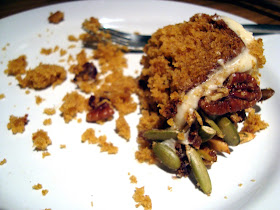I canned beets in several ways this year. I love beet pickles (which I will tell you about in a later post), but I tried this relish which turned out to be very tasty and great to have on hand. It can be eaten with any number of foods from slow-cooked beans, roasted meats, hot dogs, or simply spooned alongside other vegetables. It has a little zip from horseradish which is tempered by sugar making it very versatile and interesting. Anywhere horseradish easily treads, so will this relish.
It is a simple recipe of diced cooked beets and shredded red cabbage. I like my beets cut a little chunkier in this recipe, but you can dice them smaller if you prefer. It really just depends on your personal preference and what you plan to do with the relish. Either way, this is a relish that is instantly intriguing and addictive.
makes approximately 4 pints
This recipe calls for cooked beets. You can either boil them for 35-40 (like I do) or you can roast them in the oven until tender. Either way works. Just make sure that you boil or roast them whole, skin on. This makes it easier to peel the beets and keeps them from bleeding into your water or roasting pan.
5 cups cooked, peeled, and diced beets
5 cups shredded red cabbage
3 cups white vinegar
1 1/2 cups granulated sugar
1 tbsp prepared horseradish
1 tbsp kosher salt
In a large, nonreactive pot, combine beets, cabbage, vinegar, sugar, horseradish, and salt on medium-high heat. Bring to a boil, reduce heat, and simmer 15-20 minutes until beets and cabbage are tender. The cabbage will almost have the texture of sauerkraut when it is ready.
Ladle the relish into hot, sterilized pint jars. Ladle additional relish liquid on top to 1/2 inch headspace (you may have some liquid that you do not end up needing). Remove air bubbles and adjust headspace. Wipe the rim of each jar. Top each jar with a sterlized lid and ring. Process in a boiling water bath for 15 minutes. Allow jars to sit in canner additional 5 minutes after processing time is complete. Remove jars to a towel to cool for 24 hours. Check seals, label, and store.




























